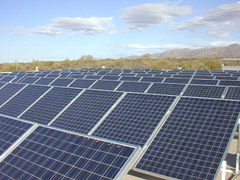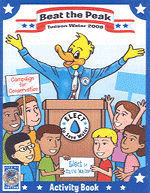Sustainable Water Infrastructure Contacts
Pacific Southwest, Region 9
Serving: Arizona, California, Hawaii, Nevada, Pacific Islands, Tribal Nations
Water & Energy Efficiency in Water and Wastewater Facilities
| Sustainable Water Infrastructure Quick Finder | ||||
|---|---|---|---|---|
| FundingGreen Jobs in the Water SectorLow Impact Development | Waste To Biogas Mapping ToolWater Conservation/EfficiencyWater-Energy Connection | Water Loss ControlWhy Sustainability? | ||
Arizona Wins WaterSense State Challenge

Arizona is a leader in water efficiency.
 Last month, the Grand Canyon state won the WaterSense State Challenge, a challenge among 20 states to encourage their local water providers to join EPA’s WaterSense program and encourage water efficiency nationwide. This selection was based on the state’s exemplary efforts to recruit utility partners and increase the population reached by the WaterSense program.
Last month, the Grand Canyon state won the WaterSense State Challenge, a challenge among 20 states to encourage their local water providers to join EPA’s WaterSense program and encourage water efficiency nationwide. This selection was based on the state’s exemplary efforts to recruit utility partners and increase the population reached by the WaterSense program.
Help for Water & Energy Efficiency
To help water facilities use water and energy more efficiency, EPA has developed a Sustainable Water Infrastructure Web Site; the Web Site includes information on funding opportunities, a resource tool kit, and various case studies.
Arizona’s success is the result of many local water conservation efforts. One innovative example is the City of Tucson ![]() , an expanding metropolis in the heart of the Sonoran Desert, which receives just 11 inches of rain a year and has no perennial surface water supply. Water scarcity has made Tucson a water-conscious city, which is reflected in its policies, rate structure, utilities, and educational institutions.
, an expanding metropolis in the heart of the Sonoran Desert, which receives just 11 inches of rain a year and has no perennial surface water supply. Water scarcity has made Tucson a water-conscious city, which is reflected in its policies, rate structure, utilities, and educational institutions.
In October, Tucson became the first city in the country to require commercial developments to harvest rainwater. Beginning in 2010, 50 percent of a development's landscaping water will come from rainfall. Additionally, all new homes built in Tucson after 2010 will need to include plumbing for a graywater system.
Tucson’s approaches to water conservation extend beyond ordinances
The only increasing source of water in Tucson is wastewater. In order to meet current and future water needs, the City built a reclaimed water treatment plant some twenty years ago. Tucson recycles that wastewater for reuse as irrigation water for parks, schoolyards, golf courses and other facilities (What Do Customers Really Want (PDF) (5pp, 40K) ![]() . Tucson is interested in more than conserving water; the City is committed to reducing dependence on fossil fuels and reducing greenhouse gas generation as well. In 2007, Tucson Water completed the installation of a 74.5 kilowatt (kW) solar panel array on one of its reclaimed water reservoirs.
. Tucson is interested in more than conserving water; the City is committed to reducing dependence on fossil fuels and reducing greenhouse gas generation as well. In 2007, Tucson Water completed the installation of a 74.5 kilowatt (kW) solar panel array on one of its reclaimed water reservoirs.

Tucson’s educational institutions are saving water too. The University of Arizona has responded to growing public and professional interest in water policy by establishing a Graduate Certificate in Water Policy. ![]() To teach children about water conservation, Tucson’s “Pete the Beak” takes kids on a new adventure each summer.
To teach children about water conservation, Tucson’s “Pete the Beak” takes kids on a new adventure each summer.
Through its educational institutions, technologies, and policies, Tucson is a compelling case study (PDF) (179pp, 1M) ![]() in water conservation and efficiency; since 1998, residents and businesses are steadily decreasing their water consumption. These innovative water programs in Tucson and other Arizona communities are leading the nation in helping to conserve precious water resources for future generations.
in water conservation and efficiency; since 1998, residents and businesses are steadily decreasing their water consumption. These innovative water programs in Tucson and other Arizona communities are leading the nation in helping to conserve precious water resources for future generations.
